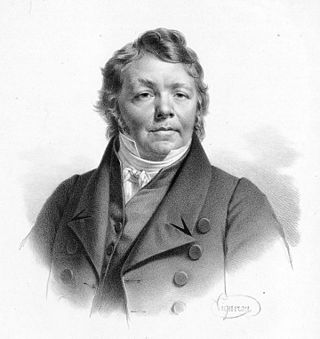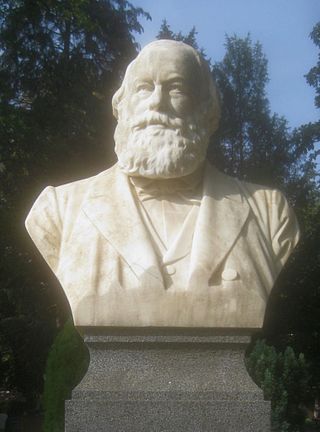
The Violin Sonata No. 5 in F major, Op. 24, is a four movement work for violin and piano by Ludwig van Beethoven. It was first published in 1801. The work is commonly known as the Spring Sonata (Frühlingssonate), although the name "Spring" was apparently given to it after Beethoven's death. The sonata was dedicated to Count Moritz von Fries, a patron to whom Beethoven also dedicated two other works of the same year—the String Quintet in C major, Op. 29 and the Violin Sonata No. 4—as well as his later Symphony No. 7 in A major.

Ludwig van Beethoven was a German composer and pianist. He is one of the most revered figures in the history of Western music; his works rank among the most performed of the classical music repertoire and span the transition from the Classical period to the Romantic era in classical music. His early period, during which he forged his craft, is typically considered to have lasted until 1802. From 1802 to around 1812, his middle period showed an individual development from the styles of Joseph Haydn and Wolfgang Amadeus Mozart, and is sometimes characterised as heroic. During this time, Beethoven began to grow increasingly deaf. In his late period, from 1812 to 1827, he extended his innovations in musical form and expression.

Muzio Filippo Vincenzo Francesco Saverio Clementi was an Italian-British composer, virtuoso pianist, pedagogue, conductor, music publisher, editor, and piano manufacturer, who was mostly active in England.

The Piano Sonata No. 14 in C-sharp minor, marked Quasi una fantasia, Op. 27, No. 2, is a piano sonata by Ludwig van Beethoven, completed in 1801 and dedicated in 1802 to his pupil Countess Julie "Giulietta" Guicciardi. Although known throughout the world as the Moonlight Sonata, it was not Beethoven who named it so. The name grew popular later, likely long after Beethoven's death.
A piano trio is a group of piano and two other instruments, usually a violin and a cello, or a piece of music written for such a group. It is one of the most common forms found in classical chamber music. The term can also refer to a group of musicians who regularly play this repertoire together; for a number of well-known piano trios, see below.

Johann Nepomuk Hummel was an Austrian composer and virtuoso pianist. His music reflects the transition from the Classical to the Romantic musical era. He was a pupil of Mozart, Salieri and Haydn. Hummel significantly influenced later piano music of the 19th century, particularly in the works of Chopin, Liszt and Mendelssohn.

Wilhelm Walter Friedrich Kempff was a German pianist, teacher and composer. Although his repertoire included Bach, Mozart, Chopin, Schumann, Liszt and Brahms, Kempff was particularly well known for his interpretations of the music of Ludwig van Beethoven and Franz Schubert, recording the complete sonatas of both composers. He is considered to have been one of the chief exponents of the Germanic tradition during the 20th century and one of the greatest pianists of all time.

Henry Louis Reginald De Koven was an American music critic and prolific composer, particularly of comic operas.
Max Rostal was a violinist and a viola player. He was Austrian-born, but later took British citizenship.

Freiherr Hans Guido von Bülow was a German conductor, pianist, and composer of the Romantic era. As one of the most distinguished conductors of the 19th century, his activity was critical for establishing the successes of several major composers of the time, especially Richard Wagner and Johannes Brahms. Alongside Carl Tausig, Bülow was perhaps the most prominent of the early students of the Hungarian composer, pianist and conductor Franz Liszt; he gave the first public performance of Liszt's Sonata in B minor in 1857. He became acquainted with, fell in love with and eventually married Liszt's daughter Cosima, who later left him for Wagner. Noted for his interpretation of the works of Ludwig van Beethoven, he was one of the earliest European musicians to tour the United States.

The Cello Sonata No. 3 in A major, Op. 69, is the third of five cello sonatas by Ludwig van Beethoven. He composed it in 1807–08, during his productive middle period. It was first performed in 1809 by cellist Nikolaus Kraft and pianist Dorothea von Ertmann, a student of Beethoven. Published by Breitkopf & Härtel the same year, it was dedicated to Freiherr Ignaz von Gleichenstein, Beethoven's friend and an amateur cellist. The sonata was successful with audiences from the beginning.

Jörg Wolfgang Demus was an Austrian classical pianist who appeared internationally and made many recordings. He was also a composer and a lecturer at music academies. In composition and playing, he focused on chamber music and lieder. He played with singers such as Elisabeth Schwarzkopf and Dietrich Fischer-Dieskau, as a piano duo with Paul Badura-Skoda, and with string players such as Josef Suk and Antonio Janigro. Demus was instrumental in bringing the historic fortepiano to concert podiums. He was a member of the Legion of Honour, among many awards. He is regarded as one of the leading Austrian pianists of the immediate post-World War II era.

Ludwig van Beethoven's Piano Sonata No. 27 in E minor, Op. 90 was written in the summer of 1814—Beethoven's late Middle period—and dedicated to Prince Moritz von Lichnowsky, a friend and benefactor who was also the dedicatee of the Eroica Variations.
The Piano Sonata No. 19 in G minor, Op. 49, No. 1, and Piano Sonata No. 20 in G major, Op. 49, No. 2, are short sonatas by Ludwig van Beethoven, published in 1805. Both works are approximately eight minutes in length, and are split into two movements. These sonatas are referred to as the Leichte Sonaten to be given to his friends and students.
Piano Sonata No. 13 in E-flat major, Op. 27 No. 1, "Quasi una fantasia", is a sonata composed by Ludwig van Beethoven in 1800–1801.

Schott Music is one of the oldest German music publishers. It is also one of the largest music publishing houses in Europe, and is the second oldest music publisher after Breitkopf & Härtel. The company headquarters of Schott Music were founded by Bernhard Schott in Mainz in 1770.
For the Richard Wagner composition, see Siegfried (opera).

Immanuel Gottlob Friedrich Faisst was a German composer and co-founder of the Stuttgart Music School, whose director he was, until his death. His compositions include works for organ, and some exercises on double fugue for piano, lieders, choruses, motets, cantatas, etc. Finally, along with Sigmund Lebert and Hans von Bülow, he published in 1881 the famous Cotta edition of the Beethoven Sonatas.
Ludwig Stark was a German pianist, composer, teacher and musicologist.
Günter Ludwig was a German pianist.













